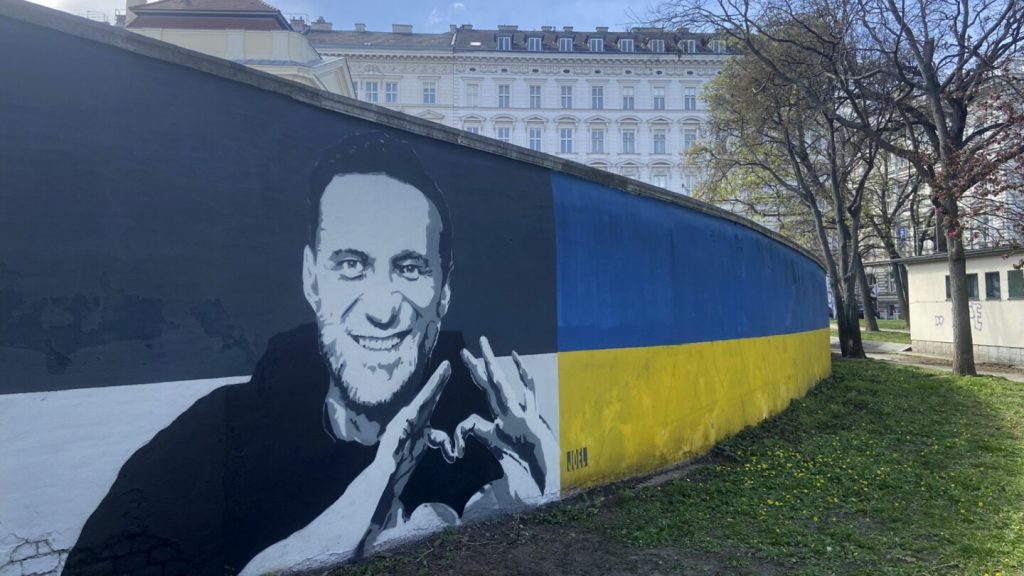The late Russian opposition leader Alexei Navalny has been honored with two large portraits on a property owned by the family of former Czech Foreign Minister Karel Schwarzenberg in Vienna. The portraits were sprayed on the wall behind a monument to Soviet soldiers, which was already painted in Ukraine’s national colors. The monument was built after Soviet troops took Vienna in 1945, and it commemorates the victims of dictatorship, with Navalny being described as an obvious victim of dictatorship by Maximillian Schaffgotsch of the Schwarzenberg family foundation. Navalny was a fierce critic of President Vladimir Putin and died in February in a Russian penal colony where he was serving a 19-year sentence.
The portraits were painted by Austrian graffiti duo Joel Gamnou, who have received positive feedback for their work. However, a group close to the Russian Embassy, known as KSORS, complained on Facebook that the wall behind the monument is being misused for political purposes. An improvised memorial to Navalny located opposite the embassy has been removed twice in the last two weeks, prompting Vienna prosecutors to consider opening an investigation into the incidents. Despite these challenges, the portraits of Navalny serve as a tribute to his fight against corruption and his stance against the Kremlin.
The monument to Soviet soldiers in Vienna holds historical significance, representing the time when Austria was under occupation until it gained full sovereignty in 1955. The addition of Navalny’s portraits to the wall behind the monument reflects the ongoing tensions between Russia and the West, as well as the legacy of those who fought against dictatorship. Navalny’s death has drawn international attention and raised concerns about human rights abuses in Russia, with many viewing him as a symbol of resistance against authoritarian rule. The decision to paint his portraits on the property owned by the Schwarzenberg family further emphasizes the importance of remembering those who have stood up against oppressive regimes.
The act of vandalizing the property with Navalny’s portraits highlights the continued debate over freedom of expression and political dissent in Austria, as well as the influence of Russian interests in the country. The dispute between the group KSORS and the graffiti artists reflects the broader tensions surrounding Navalny’s legacy and the impact of his activism on international relations. The removal of the memorials to Navalny and the complaints against the portraits further illustrate the complexities of honoring figures who challenge authoritarian regimes, especially in the current political climate. As Vienna prosecutors consider taking action against those responsible for the incidents, the debate over Navalny’s legacy continues to spark discussions about democracy and human rights in Russia and beyond.
Despite the controversy surrounding Navalny’s portraits in Vienna, the artwork serves as a reminder of the ongoing struggle for political freedom and accountability in Russia and other parts of the world. The decision to paint his images on a property with historical significance sends a powerful message about the importance of standing up against oppression and honoring those who have sacrificed their lives for the fight against dictatorship. As the debate over Navalny’s legacy continues to unfold, his portraits in Vienna represent a symbol of resistance and a call to action for those who oppose authoritarian rule. By commemorating Navalny in this way, the Schwarzenberg family foundation and the graffiti artists have drawn attention to his impact on the fight for democracy and human rights.


